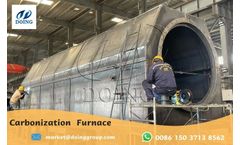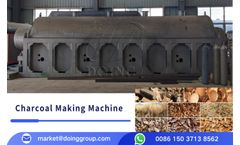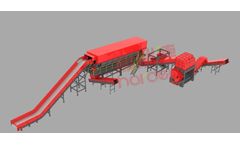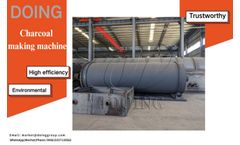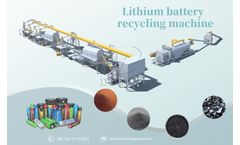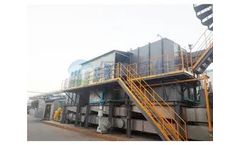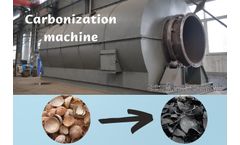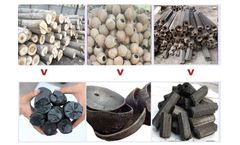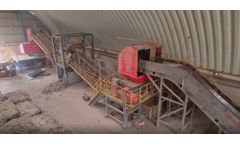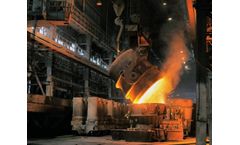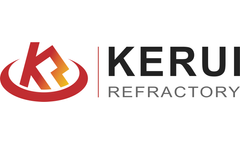Refine by
Furnace Articles & Analysis: Older
286 articles found
Modern industrial method - biomass pyrolysis carbonization furnace The modern industrial method of making charcoal requires the use of professional charcoal manufacturing equipment - biomass pyrolysis carbonization furnace. ...
The biomass continuous carbonization furnace is an efficient and environmentally friendly equipment for the thermochemical conversion of biomass resources. The whole set of continuous carbonization furnace converts biomass into charcoal by controlling the temperature, pressure and gas of the carbonized material. ...
This technology directly mixes pretreated biomass fuel with pulverized coal and sends it to the furnace for combustion. This is the biomass blending method mainly used in the UK, and it is currently the only country that has achieved the transition from large-scale coal-fired power plants to biomass-fired power generation to 100% pure biomass fuel burning in large-scale ...
Intermittent carbonization furnaces and continuous carbonization furnaces differ in design, production efficiency and applicable spot. ...
For others, a continuous carbonization furnace post-crushing offers an effective diaphragm removal solution. ...
Regenerative Thermal Oxidizer (RTO) uses the ceramic regenerators to store the heat generated by the decomposition of VOCs, and uses the thermal energy stored in the ceramic regenerator to pre-heat and decompose the untreated VOCs, thereby achieving high thermal efficiency. The oxidation temperature is generally between 800 ° C and 850 ° C, up to 1100 ° C. Regenerative Thermal ...
Regenerative Thermal Oxidizer (RTO) uses the ceramic regenerators to store the heat generated by the decomposition of VOCs, and uses the thermal energy stored in the ceramic regenerator to pre-heat and decompose the untreated VOCs, thereby achieving high thermal efficiency. The oxidation temperature is generally between 800 ° C and 850 ° C, up to 1100 ° C. Regenerative Thermal ...
CO poisoning occurs when fuel or gas combustion of residential gas furnaces and boilers is incomplete, leading to the production of the harmful CO gas. ...
Continuous carbonization furnace is an efficient and environmentally friendly equipment for the thermochemical conversion of biomass resources. The whole set of continuous carbonization furnace converts biomass into charcoal by controlling the temperature, pressure and gas of the carbonized material. The whole set of processing technology of the continuous ...
Applications of Refractory Materials in Industrial Kilns Refractory materials find extensive use in various industrial kilns, including:Cement kilns: Refractory materials are used to line the kilns, preheaters, and coolers, where they are exposed to high temperatures and corrosive environments. Glass furnaces: Refractory materials are used to construct the superstructures, ...
Metallurgical Industry: In non-ferrous metal smelting furnaces, Kerui alumina bubble brick is used to line the furnace walls and protect them from the corrosive effects of molten metals and salts. ...
Silica refractory bricks are a type of acid-resistant refractory material made primarily from silica,also known as silicon dioxide(SiO2).They are widely used in various industrial applications,particularly in high-temperature environments like kilns,due to their exceptional properties.Properties of Silica Refractory BricksSilica refractory bricks are characterized by several key properties that ...
It can be tailored to various forms and sizes to suit specific needs, whether in industrial furnaces, outdoor grills, or indoor fireplaces. This adaptability ensures that mechanism charcoal can meet the demands of diverse applications, making it a versatile and valuable resource.The durability and stability of mechanism charcoal are other significant benefits. ...
Challenges in high-temperature ash extraction and cooling The main challenge in this project was to develop a system that could handle ashes directly from the furnace exit to their evacuation point. Part of the conveyor was designed to be submerged in water, which helped control the temperature of the ashes. ...
The high energy content of pyrolysis oil makes it a suitable substitute for diesel fuel or heavy fuel oil in boilers, furnaces, and power generation facilities. With proper refining and treatment, tyre pyrolysis oil can meet the specifications required for combustion systems, thereby reducing reliance on fossil fuels and mitigating environmental impacts. 2. ...
The combustible gas generated during carbonization process can be recycled as fuel in the furnace, greatly reduce energy consumption and save cost. 4.Charcoal quality and desired properties: Producing high-quality charcoal with specific properties (e.g., low ash content, high calorific value) may require a more selective raw material or a longer pyrolysis time, which could affect ...
Recycled wood is used to fire a 6.5MWth furnace that supplies heat to a 4.2MWth thermal oil system that operates at 313°C. ...
When used in the decomposition furnace of cement kilns, it can greatly improve energy efficiency and reduce coal consumption. ...
In this comprehensive guide, we explore the benefits and applications of magnesium carbon bricks for furnaces, highlighting their role in enhancing furnace performance and longevity.Superior Heat ResistanceMagnesium carbon bricks are renowned for their exceptional heat resistance, making them ideal for use in furnaces operating at high ...
Refractory bricks are essential components in various high-temperature applications, providing thermal insulation and resistance to extreme conditions. From industrial furnaces to kilns and incinerators, refractory bricks play a crucial role in maintaining structural integrity and optimizing operational efficiency. ...

